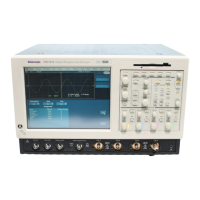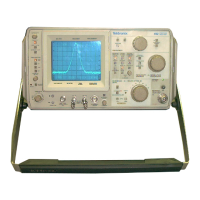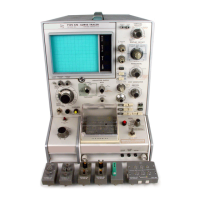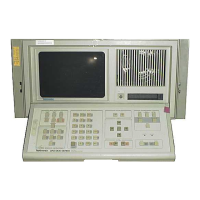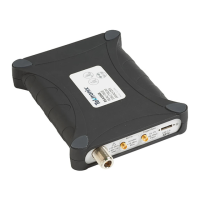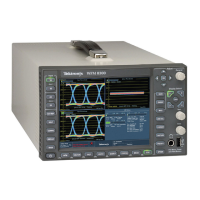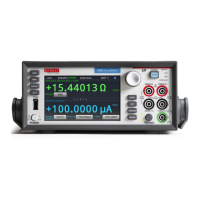Creating and Using Math Waveforms
3- 172
CSA7000B Series & TDS7000B Series Instruments User Manual
Derivative waveforms are used in the measurement of slew rate of amplifiers and
in educational applications. You can create a derivative math waveform and then
use it as a source for another derivative waveform. The result is the second
derivative of the waveform that was first differentiated.
The math waveform, derived from the sampled waveform, is computed based on
the following equation:
Y
n
= (X
(n+1)
− X
n
)
1
T
Where: X is the source waveform
Y is the derivative math waveform
T is the time between samples
Since the resultant math waveform is a derivative waveform (See Figure 3--45),
its vertical scale is in volts/second (its horizontal scale is in seconds). The source
signal is differentiated over its entire record length; therefore, the math waveform
record length equals that of the source waveform.
Derivative math waveform
Source waveform
Figure 3- 45: Derivative math waveform

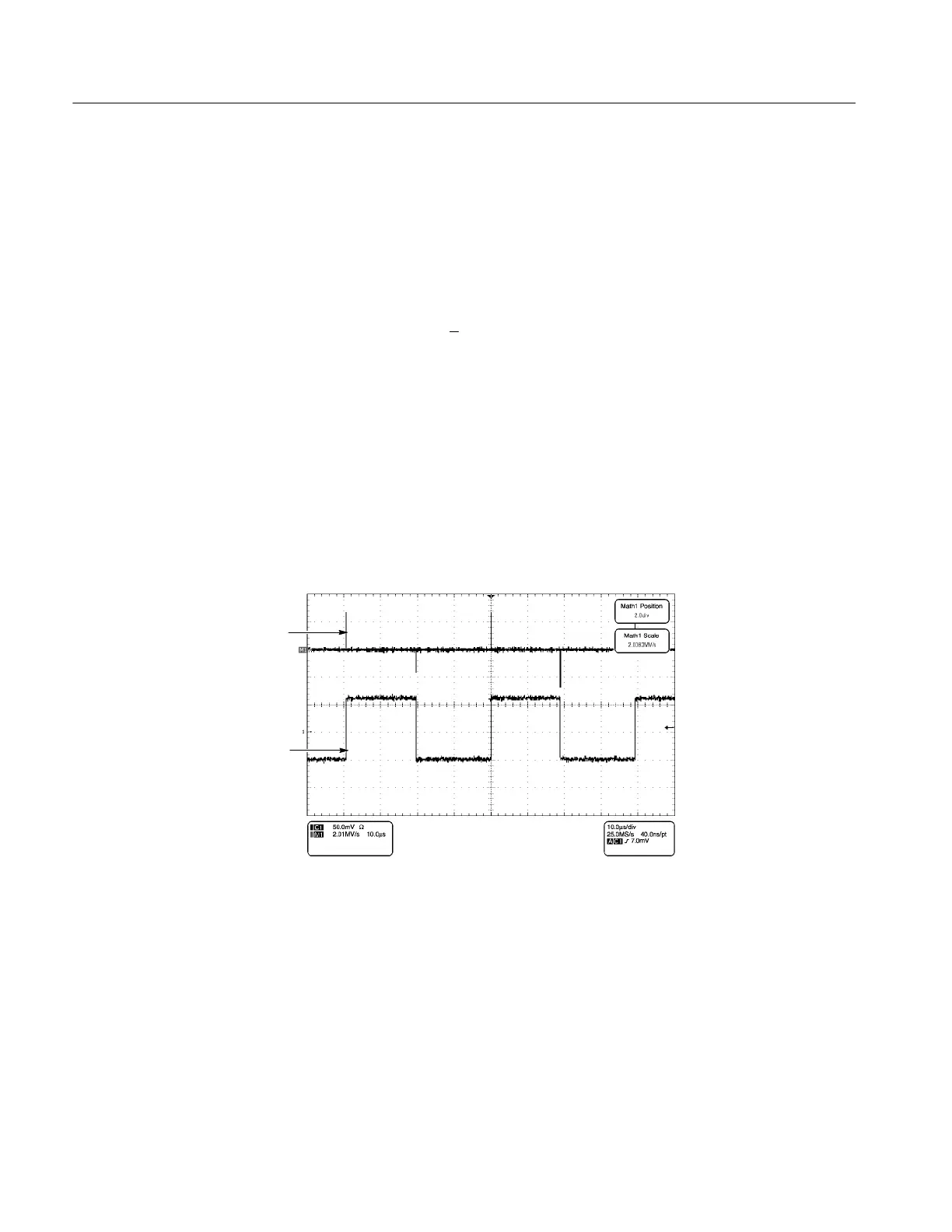